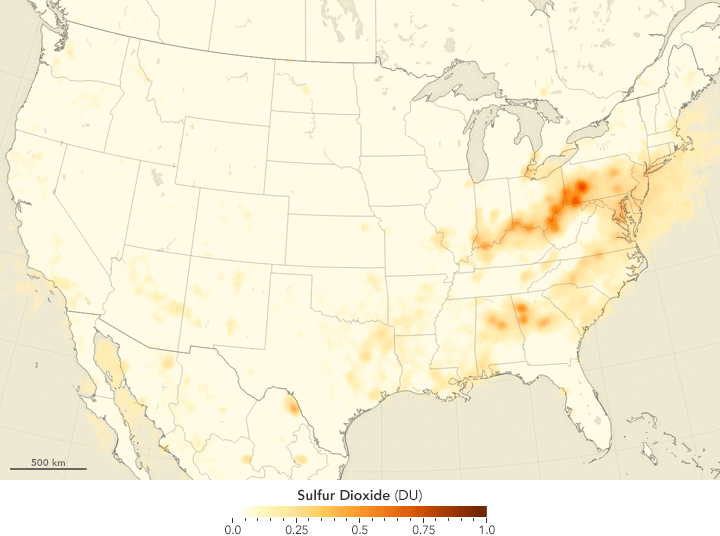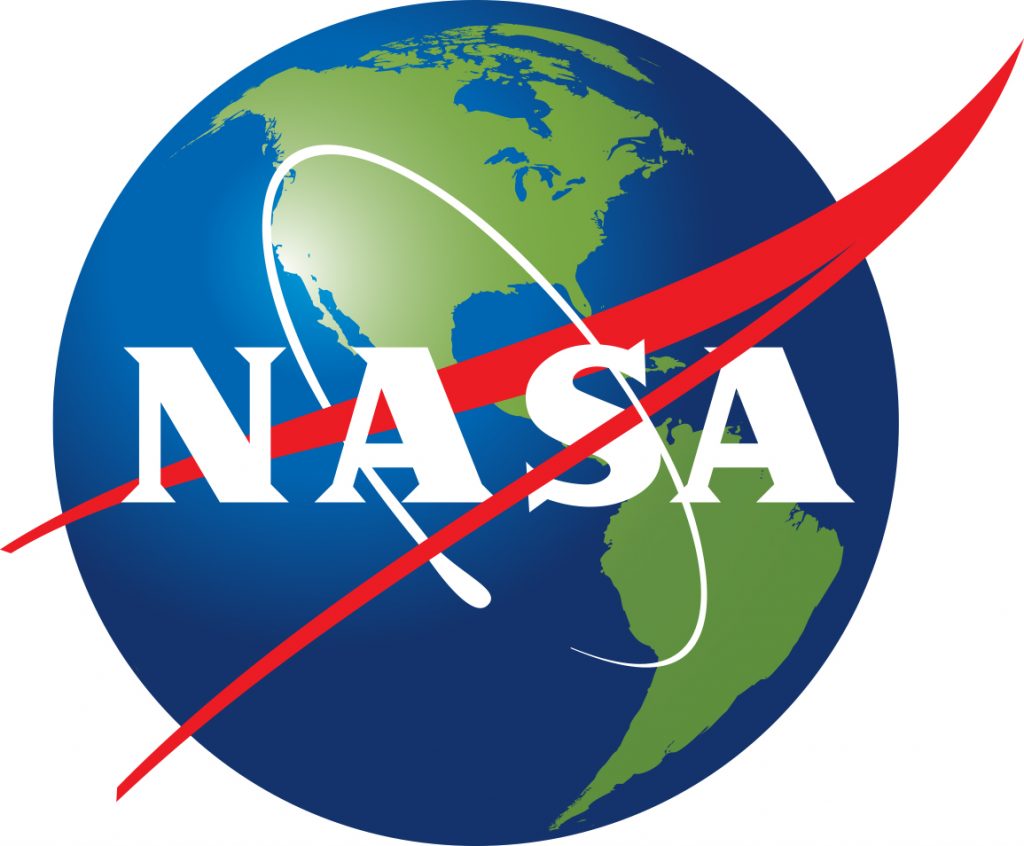
Here’s a breath of fresh air: In the United States, levels of the toxic air pollutant sulfur dioxide have fallen by 90% since 1980, according to Environmental Protection Agency data from ground-based sensors.
Sensors on satellites, including the Ozone Monitoring Instrument on NASA’s Aura satellite, have also observed the trend. The maps depict multi-year averages of sulfur dioxide concentrations over the eastern United States. The first map shows the average for 2005–2007 in Dobson Units (DU), which is the concentration of a trace gas in a column of Earth’s atmosphere; the second map shows the average for 2011–2014.
Most of the improvement relates to coal-fired power plants and other industrial facilities installing flue gas desulfurization devices—or “scrubbers”—and switching from coal with high-sulfur to lower-sulfur content.
 In addition to harming human health, sulfur dioxide affects the environment by reacting with water vapor to produce acid rain. From space, NASA satellites can help monitor air quality.
In addition to harming human health, sulfur dioxide affects the environment by reacting with water vapor to produce acid rain. From space, NASA satellites can help monitor air quality.
